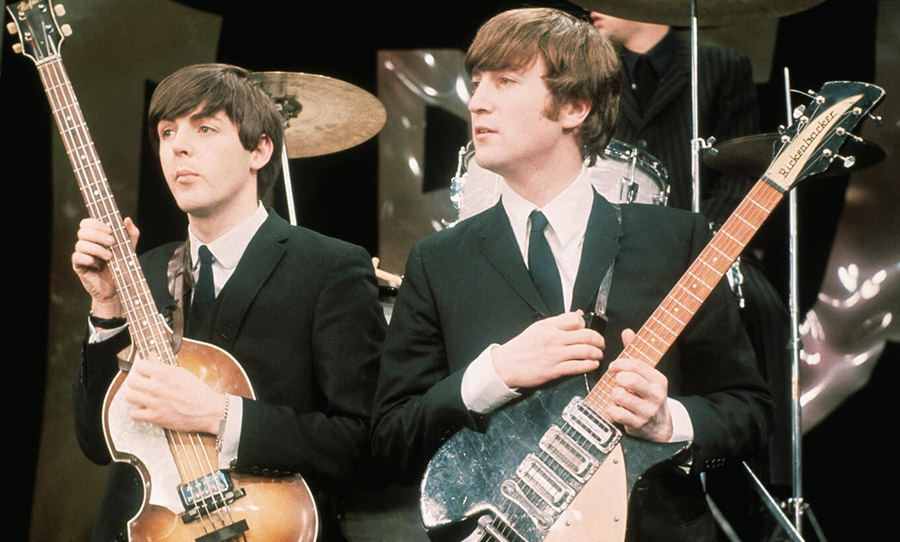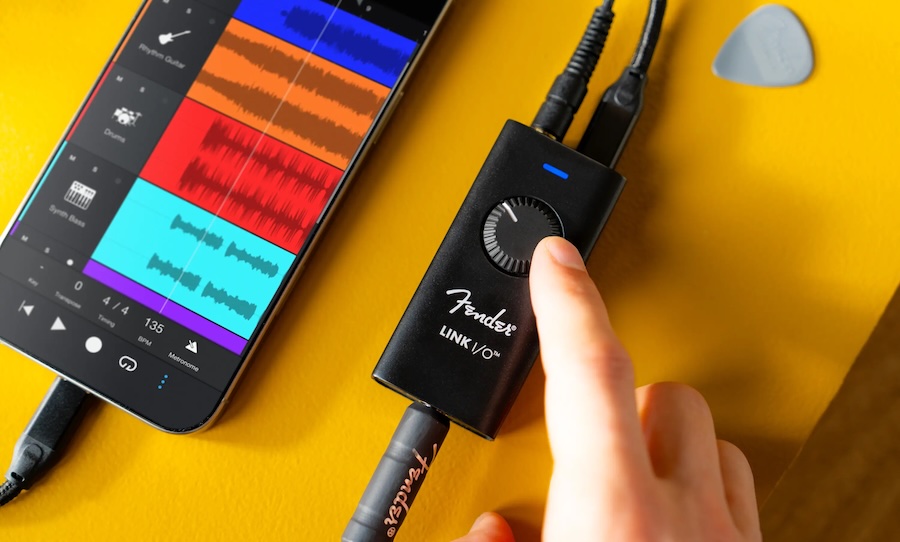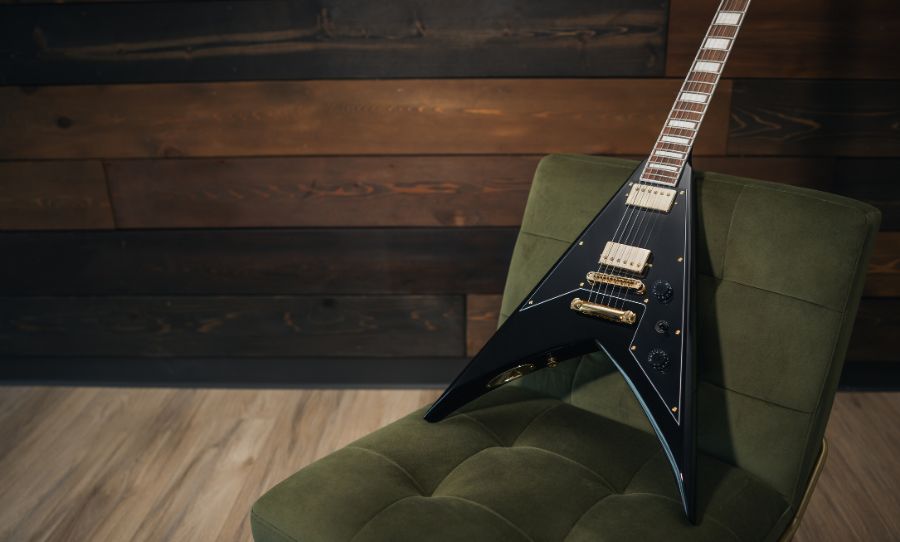Nothing matches the joy of finding the perfect groove, but the world of bass guitars can be a tricky one to navigate. Let’s look at 10 of the classics.
Bass guitars hold a very special place in the band. Spanning the realms of harmony and rhythm, this beast of the bottom end has the power and energy to define the sound of an entire ensemble. It’s no surprise then that there’s a great variety of these instruments to choose from.
So how to choose the right one for you? Whether you’re thrashing out riffy punk, or hitting the dancefloor with dirty funk, there’s a dream four-stringer to match your style (or five, or six-stringer, if that’s your jam). Let’s check out ten of the very best to help you get right in the pocket.

Fender Precision Bass
You know what they say: if it ain’t broke…
The Fender Precision bass, better known as the P bass (or simply the P) has been pumping out the grooves for nigh-on seventy years. It’s no exaggeration to say that this instrument lit the wick on a bass revolution and is undoubtedly the most recognisable of all bass guitars.
James Jamerson was a pioneer of the electric bass and the P Bass was his weapon of choice. The chunky single pickup coupled with flatwound strings is the Motown sound, but the P is endlessly adaptable to any number of styles. A stone-cold legend of an instrument.
Music Man StingRay
After Fender was bought out by CBS in 1965, the company was at a crossroads. Two employees, unhappy with Fender’s new direction struck out on their own and Music Man was born. Just like the P Bass, the Music Man StingRay was revolutionary in its own right.
The StingRay was a pioneer in the field of active electronics. The 9-volt battery that powers the famous StingRay pickup meant independent control of the treble and bass circuits, offering up a much wider spectrum of sonic possibilities.
Höfner 500/1
The Höfner 500/1 — aka the ‘violin’ bass or the ‘Beatle’ bass — is an unusual case. Surely, this curious instrument would have faded into obscurity were it not for a particularly fortuitous endorsement in the early days from a young upstart named Paul McCartney.
The Beatles bassist picked up a Höfner in Hamburg — before the Fab Four were launched on a rocket to world domination. Ever since, this instrument has been linked to the biggest band in history, but has found new life with artists like Kevin Parker of Tame Impala fame.
Gibson EB-2
Everyone knows the Les Paul, the SG and the Flying V. But unlike Fender, Gibson didn’t make the crossover to the four-string world with global recognition. But with instruments like EB-2, it’s hard to see why this was the case.
The EB-2 is hollow-bodied stunner and the perfect companion to the iconic ES-335. With a short-scale and the big ‘Sidewinder’ neck pickup, it’s a thumping bottom-end groover. Little wonder it was favoured by legendary bassists like Jack Bruce of Cream and Bill Wyman of The Rolling Stones.
Rickenbacker 4001
Like Höfner, Rickenbacker wasn’t famous for a wide range of instruments, but those that cut through into the mainstream consciousness are unforgettable. Case in point: the 4001 bass guitar.
Introduced in the early ’60s, it was favoured by an incredibly broad range of bassists, including prog rockers like Geddy Lee and Chris Squire, not to mention metalheads like Lemmy Kilmister. And when you could tear Paul McCartney away from his violin bass, you guessed it, he was on the 4001. Plus, just look at it.
Stanley Clarke Alembic
Though possessing nowhere near the same amount of brand recognition as some of the giants on this list, Alembic has its own rich history. Founded by Owsley Stanley, the game-changing audio engineer who helmed The Grateful Dead’s ‘Wall of Sound’, Alembic basses are in a league of their own in terms of sound and build quality.
In 1973, Stanley Clarke, the jazz-fusion bass legend, played his first Alembic and there was no turning back. With exquisite timbers and hardware, combined with Alembic’s premium active preamp, this is a bass for the tone connoisseur.
Ibanez ‘lawsuit’ P/J bass
The mid-’70s was a fascinating time guitar building. American guitar makers appeared to be in the doldrums, while axes from the across the Pacific in Japan were on the rise. Ibanez made clones of American classics in the period, which would go onto become known as the ‘lawsuit’ era.
While many knockoff classics emerged in this era, special mention must be made of the Silver Series Ibanez P/J. The best of both the Precision and Jazz worlds are on offer here. But with the Precision pickup position altered to accommodate the extra Jazz pickup, even more juicy bottom end can be extracted from this cult classic bass.

Fender Jazz Bass
The Jazz bass, introduced by Fender in 1960 was the next step in the company’s bottom-end evolution. It cuts a sleeker silhouette compared to its older sibling (the P bass), featuring a tapered neck for enhanced playability and a second pickup for more tonal possibilities. The bass guitar had become sophisticated.
60 years on, the J has never even looked liked going out of style. Favoured by some of the true heavyweights of the instrument, including the incomparable Jaco Pastorius, this bass is an icon for all styles.
Gibson Thunderbird
The Gibson Thunderbird still looks radical today, so imagine laying eyes on it when it first came out in 1963. The T-Bird features a unique body and headstock shape, with jagged, triangular peaks jutting out from the bass horn and rear.
As you would expect from a bass that looks like this, it’s pure rock and roll. The meaty, thumping low-end — which is a Gibson trademark — the Thunderbird has in spades. If you’re looking to make a bass statement with both sound and looks, this is the axe for you.
Guild Starfire
The Guild Starfire is another style icon, but also comes with a surprising amount of tonal options that emit from its two pickups. It was made famous in the ’60s by the groovy, psych-infused bass lines of Jefferson Airplane’s Jack Cassady.
Key to it mellow and consistent tone throughout the registers is its thinline, semi-hollow build and its short-scale neck. An underrated classic that would be at home in any style of music, especially if you like it a bit retro.
Ampeg AUB 1
Ampeg is unequalled in the realm of bass amplification, but those in the know will be able to point toward a few classic bass guitars too, especially the fretless AUB 1.
Full of old-world, ornate charm, this bass is one of a kind in terms of tone and aesthetic. This fretless beast was a favourite of The Band’s Rick Danko and of all the electric basses on this list, it’s the one that comes closest to being a double bass.



